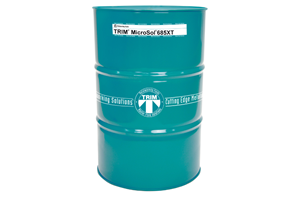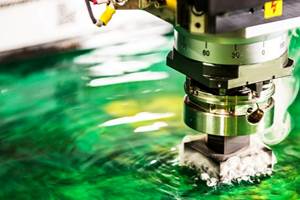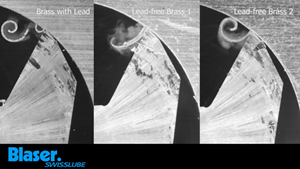Low-Pressure Spraying Coolant System Keeps Prototype Shop Out Of The Fog
Imagine a machine, with parts your shop helped to manufacture, traveling on a one-way trip for millions of miles, to land and gather information on another planet. Now, imagine your coolant ruining all that.
Imagine that you work in a shop that turns out prototypes and other one-of-a-kind parts, all requiring very exact specifications. Imagine you are manufacturing these parts for use in a one-of-a-kind machine that has to function correctly the first time and cannot be serviced should a problem occur during operation. And finally imagine this machine, with parts your shop helped to manufacture, traveling on a one-way trip for millions of miles, to land and gather information on another planet.
Although that may sound overly dramatic, it is typical of much of work done at the Mechanical Prototype and Hardware Fabrication Section, a division of Jet Propulsion Laboratories (JPL), in Pasadena, California. Here, the engineers and machinists manufacture aircraft, spacecraft, and the components used in them. More recently, the work done there has included components for the Sojourner rover on the Pathfinder mission. Sojourner is the roving vehicle that recently landed on Mars and is now exploring the surface and transmitting data to scientists here on Earth.
In the Mechanical Prototype and Hardware Fabrication shop at JPL, many different types of parts are manufactured using a variety of machines. Materials vary, with aluminum being used 60 to 70 percent of the time. Additionally, the shop also machines titanium and other materials as the need arises.
Because of the nature of their work, each project is unique and turnaround times vary, but one thing they all have in common is that they start with an engineer's design. When this design arrives at the shop it may be on anything from dimensionally accurate blueprints and electronic media to a simple drawing on a paper napkin. The shop's job is to bring these ideas into the real world.
Three years ago, JPL applied their coolant like many other shops. They used full flood coolant on some applications and misting coolant on others. The shop's main problem was that the misting coolant systems were fogging up the work areas of the Prototype department. Coolant was atomizing and being carried around the shop in the air. Not only was this inconvenient and messy, but it also began to affect the health of some of the workers, some of whom were having trouble breathing. One machinist in particular was ready to resign because the fog was aggravating an existing condition he had. Darrell Houser, Group Supervisor of the Prototype and R&D Group, knew this had to change if he was to keep good people.
While at a Westec show a few years ago, Mr. Houser happened to stop by the Hench Manufacturing booth and saw the Fog Buster, a low-pressure coolant sprayer that directs an accurate spray to the cutter and workpiece without the fine atomizing of coolant. Thinking this might be the answer to his problem, he contacted Lee Hench, president of Hench Manufacturing (San Clemente, California) and the inventor of the Fog Buster. As Mr. Houser said, "I was tired of working in the fog."
Mr. Hench designed the Fog Buster to eliminate the very problem Mr. Houser was experiencing. Mr. Hench was dissatisfied with the spray mist systems he was using since they were not only fogging up the shop, but were also needing continual adjustment. His design for the Fog Buster allows coolant to enter the air stream inside the sprayer head. Coolant then flows as a continuous stream that is drawn by a strong air flow through the nozzle tube. The important difference between other misting coolant systems and the Fog Buster is that coolant is not atomized at the nozzle tip. A small stream of coolant is carried accurately with the air stream as it leaves the nozzle, forming into small drops as it carries to the workpiece. This allows the sprayer to produce a small, accurate spray pattern several inches or more from its target. A precision needle valve at the sprayer head easily adjusts the coolant flow to suit the job application. The system operates on air pressures of 10 to 20 PSI and uses virtually any type of coolant.
In 1994, Mr. Hench arranged for several systems to be set up in the shop and once the systems were in place, the results were immediate. Mr. Houser said that he noticed none of the fogging as with the older coolant mist systems. No fogging in the shop allowed the employees to breath easy again (as well as allow the one machinist with the condition to remain). When asked about any down sides to using the system, Mr. Houser said he has yet to find one. In addition to the de-fogging effect the system has, coolant usage has also gone down and there is minimal cleanup.
Improving environmental conditions can mean a lot in a shop like this. When shops have to produce components used in such critical applications such as aircraft and spacecraft components, every effort to improve employee efficiency can make a difference.
Related Content
Master Fluid Solutions Semisynthetic Coolant Inhibits Corrosion
Trim MicroSol 685XT is designed to provide enhanced corrosion inhibition on all ferrous and nonferrous metals.
Read MoreOelheld Coolant Increases Metal Removal Rates
The odorless coolant is said to offer increased removal rates, lower electrode wear, excellent surface qualities, lower refill quantities and longevity to provide lower overall operating costs.
Read MoreSTLE Opens Registration for 2024 Annual Meeting
The Society of Tribologists and Lubrication Engineers’ 2024 STLE Annual Meeting & Exhibition will take place May 19-23 at the Minneapolis Convention Center in Minneapolis, Minnesota.
Read MoreHigh-Speed Videos Analyze Machining Processes in Fine Detail
Blaser Swisslube captures the machining process, chip formation and behavior of its Synergy 735 metalworking fluid through high-speed, macro photos and videos.
Read MoreRead Next
The Cut Scene: The Finer Details of Large-Format Machining
Small details and features can have an outsized impact on large parts, such as Barbco’s collapsible utility drill head.
Read More3 Mistakes That Cause CNC Programs to Fail
Despite enhancements to manufacturing technology, there are still issues today that can cause programs to fail. These failures can cause lost time, scrapped parts, damaged machines and even injured operators.
Read More










.png;maxWidth=300;quality=90)






.png;maxWidth=300;quality=90)







